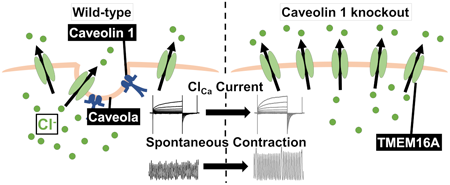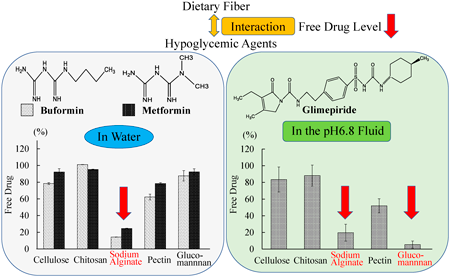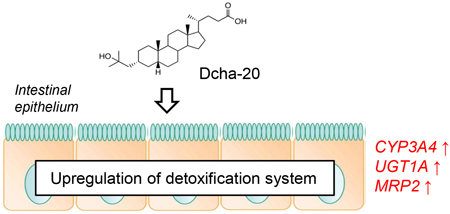- |<
- <
- 1
- >
- >|
-
2022Volume 45Issue 11 Pages 1596-1601
Published: November 01, 2022
Released on J-STAGE: November 01, 2022
Download PDF (1174K) Full view HTML -
 2022Volume 45Issue 11 Pages 1602-1608
2022Volume 45Issue 11 Pages 1602-1608
Published: November 01, 2022
Released on J-STAGE: November 01, 2022
Editor's pickLipopolysaccharide (LPS) treatment induces hemophagocytic lymphohistiocytosis(HLH)-like features, including pancytopenia, in senescence-accelerated mice (SAMP1/TA-1). Prolonged hyper-inflammation in LPS-treated SAMP1/TA-1 severely impaired the hematopoietic microenvironment in the bone marrow (BM), disrupting the dynamics of hematopoiesis. Macrophages are major components of hematopoietic microenvironment, and the balance of pro-inflammatory macrophages (M1) and anti-inflammatory macrophages (M2) governs the inflammatory process. In this study, the authors showed that LPS treatment led to severely imbalanced M1 and M2 macrophage polarization and prolonged monocyte-macrophage hyper-production in the BM of SAMP1/TA-1, resulting in severe and persistent inflammation in the BM hematopoietic microenvironment, and disruption of the dynamics of hematopoiesis.
Download PDF (3157K) Full view HTML -
2022Volume 45Issue 11 Pages 1609-1615
Published: November 01, 2022
Released on J-STAGE: November 01, 2022
Download PDF (5547K) Full view HTML -
2022Volume 45Issue 11 Pages 1616-1626
Published: November 01, 2022
Released on J-STAGE: November 01, 2022
Download PDF (6497K) Full view HTML -
 2022Volume 45Issue 11 Pages 1627-1635
2022Volume 45Issue 11 Pages 1627-1635
Published: November 01, 2022
Released on J-STAGE: November 01, 2022
Editor's pickStathmin, a microtubule destabilizing protein, may modulate the antiproliferative activity of eribulin, a microtubule dynamics inhibitor, in ovarian cancer. The authors investigated the function of stathmin in the antitumor effect of eribulin in ovarian cancer. In the cancer xenograft model and cultured cancer cells, eribulin treatment decreased tumor weight and increased phosphorylated stathmin mediated in part by downregulation of protein phosphatase 2A. Eribulin-induced phosphorylation of stathmin may also enhance the antiproliferative effect of paclitaxel. These results suggest that eribulin may inhibit proliferation of ovarian cancer cells in part by modulating stathmin activity.
Download PDF (4043K) Full view HTML -
2022Volume 45Issue 11 Pages 1636-1643
Published: November 01, 2022
Released on J-STAGE: November 01, 2022
Download PDF (5174K) Full view HTML -
2022Volume 45Issue 11 Pages 1644-1652
Published: November 01, 2022
Released on J-STAGE: November 01, 2022
Download PDF (1548K) Full view HTML -
2022Volume 45Issue 11 Pages 1653-1659
Published: November 01, 2022
Released on J-STAGE: November 01, 2022
Download PDF (8730K) Full view HTML -
 2022Volume 45Issue 11 Pages 1660-1668
2022Volume 45Issue 11 Pages 1660-1668
Published: November 01, 2022
Released on J-STAGE: November 01, 2022
Editor's pickHereditary amyloidogenic transthyretin (ATTR) ocular amyloidosis, an intractable disease, is caused by ATTR production from retinal cells. Therefore, development of novel therapeutic agents is urgently needed. In this study, folate-modified dendrimer/cyclodextrin conjugates (FP-CDE) were prepared and their ability to deliver plasmid DNA encoding the TTR-targeted genome editing CRISPR-Cas9 system (TTR-CRISPR pDNA) was investigated. As a result, FP-CDE/TTR-CRISPR pDNA complex was taken up by retinal pigment epithelial cells, exerted ATTR amyloid suppression, and inhibited TTR production through genome editing effect. Taken together, FP-CDE may be useful as a novel therapeutic TTR-CRISPR pDNA carrier in the treatment of ATTR ocular amyloidosis.
Download PDF (1105K) Full view HTML -
2022Volume 45Issue 11 Pages 1669-1677
Published: November 01, 2022
Released on J-STAGE: November 01, 2022
Download PDF (1134K) Full view HTML -
 2022Volume 45Issue 11 Pages 1678-1683
2022Volume 45Issue 11 Pages 1678-1683
Published: November 01, 2022
Released on J-STAGE: November 01, 2022
Editor's pickCutaneous hypersensitivity (e.g., alloknesis) was observed in mice with sodium dodecyl sulfate (SDS)-induced dermatitis. Repeated application of SDS increased the expression of c-Fos-positive neurons in the superficial spinal dorsal horn (SDH). In vivo extracellular recording revealed afterdischarge responses following stimulation with light touch were also observed in the superficial SDH neurons. Authors found: 1) relation between the alloknesis responses and the afterdischarge responses, and 2) correlation between the intensity of the afterdischarge responses and depth of the recording site. These findings suggest afterdischarge responses can be an index of alloknesis responses.
Download PDF (1613K) Full view HTML -
2022Volume 45Issue 11 Pages 1684-1691
Published: November 01, 2022
Released on J-STAGE: November 01, 2022
Advance online publication: August 20, 2022Download PDF (1074K) Full view HTML -
2022Volume 45Issue 11 Pages 1692-1698
Published: November 01, 2022
Released on J-STAGE: November 01, 2022
Advance online publication: August 20, 2022Download PDF (790K) Full view HTML -
 2022Volume 45Issue 11 Pages 1699-1705
2022Volume 45Issue 11 Pages 1699-1705
Published: November 01, 2022
Released on J-STAGE: November 01, 2022
Editor's pickReactive sulfur species including monosulfides and persulfides/polysulfides are increasingly recognized to play important roles in (patho)physiological events in various organ systems. Authors compared the effects of monosulfide and trisulfide as therapeutic agents for intracerebral hemorrhage (ICH). Monosulfide alleviated neurological deficits after ICH and prevented ICH-induced neuronal death, axon degeneration and chemokine production. Trisulfide partially mimicked the effect of monosulfide and was more effective than monosulfide in suppressing recruitment of inflammatory cells, while having no effect on neurological functions. These findings underscore different pharmacological properties of individual sulfur species in regulation of brain pathology.
Download PDF (2943K) Full view HTML -
2022Volume 45Issue 11 Pages 1706-1715
Published: November 01, 2022
Released on J-STAGE: November 01, 2022
Download PDF (4277K) Full view HTML
-
2022Volume 45Issue 11 Pages 1716-1719
Published: November 01, 2022
Released on J-STAGE: November 01, 2022
Download PDF (632K) Full view HTML -
2022Volume 45Issue 11 Pages 1720-1724
Published: November 01, 2022
Released on J-STAGE: November 01, 2022
Download PDF (1894K) Full view HTML -
2022Volume 45Issue 11 Pages 1725-1727
Published: November 01, 2022
Released on J-STAGE: November 01, 2022
Download PDF (312K) Full view HTML
- |<
- <
- 1
- >
- >|


















